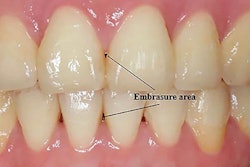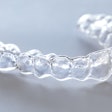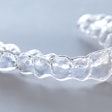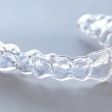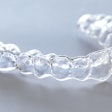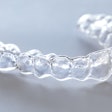About 1 in 5 tweens who wore Invisalign mandibular advancement appliances (MAAs) to treat a class II malocclusion had larger overbites after treatment. The study was published in the American Journal of Orthodontics and Dentofacial Orthopedics.
In those patients who achieved smaller overbites after wearing prescribed aligners, the reduction was less than clinicians had planned. Additionally, only about one-third of planned anteroposterior (AP) first permanent molar (FPM) changes occurred, the authors wrote.
“This appears to be the largest study to comprehensively assess whether the achieved changes in the overjet and the AP relationship between the FPM in the maxilla and the FPM in the mandible, resulting from wear of the MAA, were the same as those planned,” wrote the authors, led by Dr. Maurice Meade of the Adelaide Dental School at the University of Adelaide in Australia (Am J Orthod Dentofacial Orthop, January 16, 2024).
Worldwide, epidemiological research has suggested a high prevalence of class II malocclusion. With the growing use of clear aligner therapy, it is valuable for research to be conducted to confirm the clinical efficacy of MAAs.
To explore whether achieved changes in the treatment of class II malocclusion mirrored those planned after undergoing the first phase of Align Technology’s Invisalign treatment with MAAs, a retrospective study was conducted with 195 patients. The mean age of patients was 12.62 ± 2.20 years. Data from Align Technology’s software ClinCheck were used to document pretreatment, planned, and achieved overjet measurements, according to the study.
Overall, several patients treated did not have the outcomes that had been planned for them. In patients who completed the initial MAA phase, 38 (19.5%) had larger overbites than they had pretreatment, the authors wrote.
 Bland-Altman plot comparing the difference between the initial and achieved overjet and the average of the initial and achieved overjet. Black corresponds to the coincidence between the (pretreatment) initial and achieved overjet. Pink and green correspond to 95% confidence intervals (green, upper; pink, lower), and purple corresponds to the mean outcome. For ease of viewing, all patients with increased overjet at the completion of the prescribed aligner wear compared with that at pretreatment (red). All patients had a reduced overjet at the completion of prescribed aligner wear compared with pretreatment (black). Image and caption courtesy of Meade and Tony Weir. Licensed under CC BY-NC-ND.
Bland-Altman plot comparing the difference between the initial and achieved overjet and the average of the initial and achieved overjet. Black corresponds to the coincidence between the (pretreatment) initial and achieved overjet. Pink and green correspond to 95% confidence intervals (green, upper; pink, lower), and purple corresponds to the mean outcome. For ease of viewing, all patients with increased overjet at the completion of the prescribed aligner wear compared with that at pretreatment (red). All patients had a reduced overjet at the completion of prescribed aligner wear compared with pretreatment (black). Image and caption courtesy of Meade and Tony Weir. Licensed under CC BY-NC-ND.
A mean overjet reduction of 1.88 mm was achieved in patients, which was about 43% of what was planned. The mean AP FPM change was 0.9 mm, which was about 31% of what was planned for patients, the authors wrote.
At the end of the initial aligner treatment phase, more than half of the patients had an overjet of greater than 4 mm and about one-quarter of the patients had an overjet of greater than 6 mm, they wrote.
However, the study had limitations. Researcher only assessed the MAAs; therefore, the findings were not relevant to Invisalign appliances with intermaxillary class II elastics or clear aligners from other companies, the authors wrote.
“Further studies, ideally prospective and randomized, are urgently required to determine why there were shortfalls in the treatment objectives described in this investigation,” Meade et al wrote.




